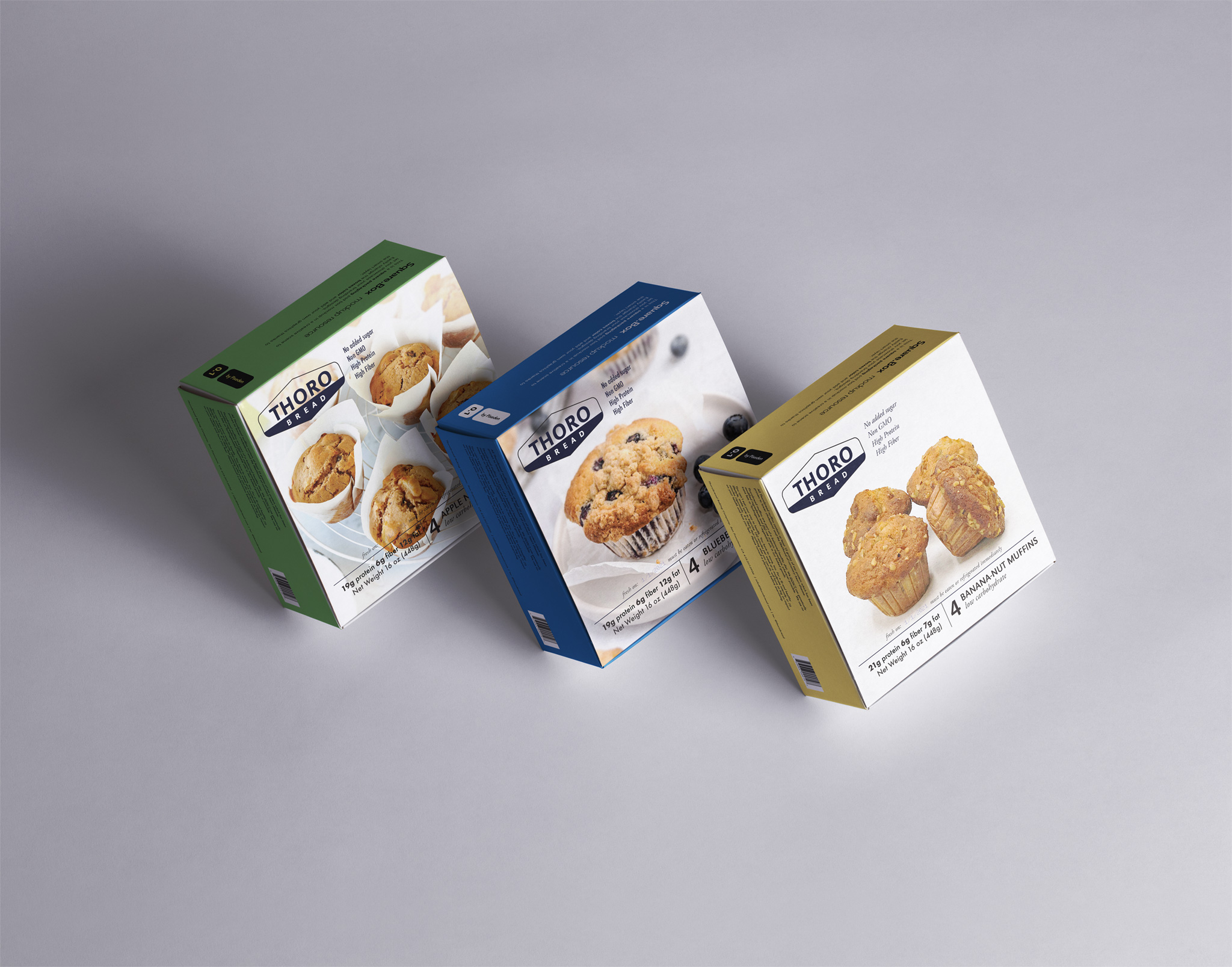Case Study
Creation of a low-carb muffin with a low glycemic index
Both of my parents had acquired adult-onset diabetes in their sixties – probably related to their lifestyle and diet. Having grown up eating many of the same foods, I worried that I too was likely to acquire diabetes when I hit their age. Did it have to be this way? Pastry was one of the things which I loved that is bad for diabetes and metabolic syndrome. Who doesn’t love love muffins? Although I had been following the research on the epidemic of Type II diabetes and metabolic syndrome, I intensely focused on research around the glycemic response to simple carbohydrates and sugars. Having digested the science, I asked myself, “Shouldn’t it be possible to create a great-tasting low-carb muffin suitable for diabetics and those predisposed to metabolic syndrome.”
Product Concept – Low-glycemic Muffin
Although I’m not a food scientist, I know my way around a lab and a kitchen. Earlier in my career, I had been an apprentice pastry chef at a restaurant in Carmel, California. Add to that my stint in the marketing department at Nestle Beverage company in San Francisco and I had some bona fides to tackle this problem. I’m also a fitness fanatic with a heavy emphasis on nutrition. Preliminary analysis of the pastry market led me to focus on muffins as a product direction. Muffins have broad appeal and are eaten regularly. Muffins also have the benefits of several high-fiber formulations already in the market. The most audacious muffin makers claim to be a “healthy” food. Muffins are also easy to modify. They don’t rely on the precise chemistry that other pastries do for their characteristic texture and mouthfeel.
Consulting Nutrition Experts
Consulting with nutritionists and doctors, we got a good idea of what a healthy muffin would look like. Using this target, we determined the macronutrient profile that would go into the recipes. The next three months were occupied with experimentation on various formulations of muffins replacing the wheat flour with a variety of resistant starches and high fiber grains. Sucralose, which had just come on the market was my go to sweetener. I obtained samples of bulk sucralose flakes and liquid. After literally hundreds of test batches, I arrived at a great-tasting product that hit all the right points.
Commercial Production of A Low-Carb Muffin
To commercialize the product I reached out to a friend who owned a commercial kitchen and strategized the logistics and economics of producing and distributing the product. The manufacturing process largely followed the production of conventional muffins. I developed the distribution plan, marketing and business model. Leveraging the distribution network of the commercial kitchen, I contacted hundreds of grocery outlets about carrying the product and got buy-in from 24 outlets for the initial pilot.
A Functional Food That Tastes Good
The initial one month pilot was a moderate success. We were selling through the product at a significant premium to the conventional competition. I ran a demoing program which helped sell-through and consumer feedback was that they liked the product. All the lights seemed green and I was planning the next phase of the expansion. Then we started getting some disheartening data. (Presentation deck)
Unintended Consequences of Removing Sugar
Some consumers were returning the product because of spoilage. Whereas conventional baked pastries had a shelf life of four days, our muffins were spoiling by 36 hours. Our team attacked the problem on several fronts simultaneously. The delivery team increased the delivery frequency from four days to two. The kitchen tweaked the product formulation to reduce the moisture content and increase the Ph. Both techniques served to inhibit microbial growth. Even after a couple weeks with the tweaked formulation and processing, we didn’t have the quality or shelf-life we were looking for. I reached out to our ingredient vendors for ideas and expertise. They brought several likely solutions. It was clear at this point two months into the pilot that we needed more significant changes to the product than tweaks. We made the regretful decision to pull the product from shelves while we solved the problem.
Iterating on the Low-Carb Product
Thorobread was supposed to be as natural as possible. Accordingly, I had eschewed additives or preservatives. The inherent nature of the ingredients makes the quality of the product. Given the nutritional profile of the product, it seemed that this was not going to be possible. We experimented with spraying the muffin tops with ethanol as they level the oven to minimize their inoculation with mold spores. We looked at modified atmosphere packaging using nitrogen. The kitchen was not equipped for cleanroom production and using that kind of facility would ruin the economics of the business. We tried raising the pH of the dough with citric, malic, and ascorbic acid. None of these interventions got us the performance we needed. Reluctantly, I considered conventional preservatives. These actually worked but they changed the flavor profile in ways that compromised the product.
Pivot to Logistics
At the same time, interest in the product had been growing, we were getting meetings with Whole Foods, Safeway, and Jamba Juice. But the claims we were making to those potential customers were no longer operative. To creditably move forward, we needed to rethink the whole production and delivery system. We’d need to pivot to become a logistics company more than a creative food company. The kinds of distribution system that would work would require partnerships with all kinds of other companies and we would retain little intellectual property in the arrangement. That kind of long-term business development is not where my talents and interest lie. Regrettably, but with certainty, we decided to close the doors on Thorobread.
